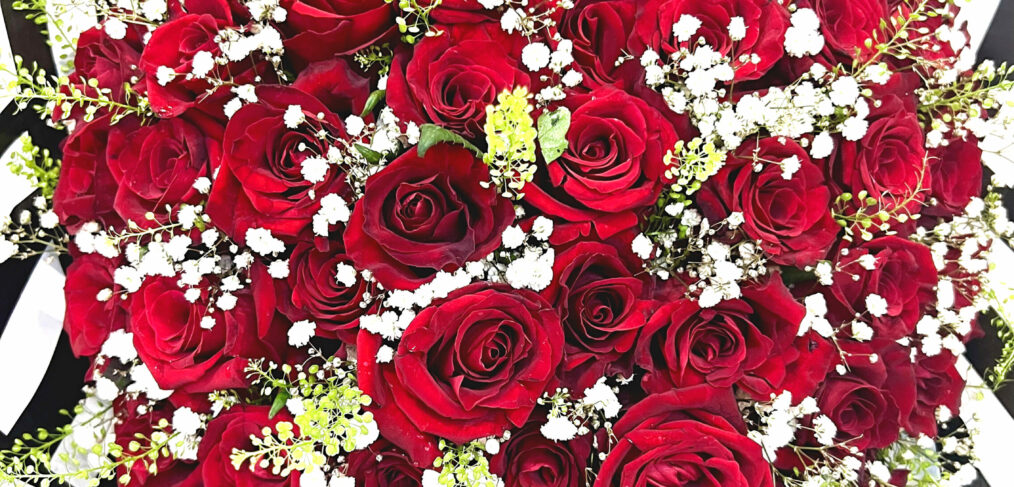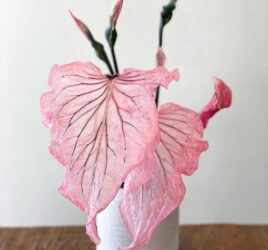
THE UNCOMMON LANGUAGES OF FRESH FLOWERS
The language of flowers, also known as floriography, is a fascinating and historical means of communication that involves assigning symbolic meanings to various types of flowers and arrangements. This intricate form of expression has been utilized for centuries across different cultures to convey sentiments, emotions, and messages without the need for spoken or written words.
The practice gained popularity during the Victorian era in the 19th century when verbal expression of emotions was often constrained, and people sought alternative ways to convey their feelings.
Each flower, color, and arrangement holds a specific meaning in the language of flowers, enabling individuals to express a wide range of emotions, from love and admiration to grief and sympathy.
The symbolic language of flowers is not only limited to individual blooms but extends to the combination of different flowers in a bouquet, the arrangement style, and even the presence or absence of certain elements like leaves or thorns.
Some common examples of flower meanings include:
- Roses:
- Lilies:
- Tulips:
- Daisies:
- Orchids:
- Sunflowers:
- Daffodils:
- Chrysanthemums:
1. Roses: The Timeless Messengers of Love
Red Roses:
Unsurprisingly, red roses symbolize love and passion. They are the universal emblem of romantic love and deep affection.
White Roses:
In contrast, white roses signify purity, innocence, and new beginnings. They’re often associated with weddings and new starts.
Yellow Roses:
Representing friendship and joy, yellow roses convey feelings of happiness and appreciation.
Pink Roses:
Delicate and charming, pink roses express admiration, gratitude, and grace.
2. Lilies: Elegant Symbols of Virtue
White Lilies:
Known for their purity and virtue, white lilies are often associated with funerals and represent the restored innocence of the departed soul.
Easter Lilies:
Symbolizing resurrection and renewal, Easter lilies are commonly linked to the Christian celebration of Easter.
Calla Lilies:
With their elegant shape, calla lilies symbolize magnificence and beauty.
3. Tulips: Expressing Love and Elegance
Red Tulips:
Similar to red roses, red tulips convey deep love and passion.
Yellow Tulips:
Symbolizing cheerful thoughts and sunshine, yellow tulips are often associated with happiness.
Purple Tulips:
Representing royalty and elegance, purple tulips are a gesture of admiration.
4. Daisies: Innocence and Purity
White Daisies:
Standing for innocence and purity, white daisies are often seen in bridal bouquets.
Gerbera Daisies:
Vibrant and cheerful, gerbera daisies symbolize happiness and joy.
5. Orchids: Symbols of Rare Beauty and Love
Pink Orchids:
Expressing affection and deep admiration, pink orchids are often given as a gesture of love.
White Orchids:
Representing purity and elegance, white orchids are often associated with weddings.
6. Sunflowers: Symbol of Adoration and Loyalty
Sunflowers symbolize adoration, loyalty, and longevity. Their bright and sunny appearance reflects positivity and warmth.
7. Daffodils: Signs of New Beginnings
Daffodils represent rebirth and new beginnings, making them perfect gifts for someone starting a new chapter in life.
8. Chrysanthemums: Honoring Life and Death
Chrysanthemums are often associated with honoring the dead in various cultures. They symbolize death and rebirth and are frequently used in funeral arrangements.
Understanding the language of flowers adds depth and sentiment to the act of giving and receiving blooms. It allows individuals to express themselves in a subtle and elegant manner, transcending the limitations of spoken language.
Whether used to convey affection, celebrate an occasion, or express sympathy, the language of flowers continues to be a timeless and meaningful form of communication.



